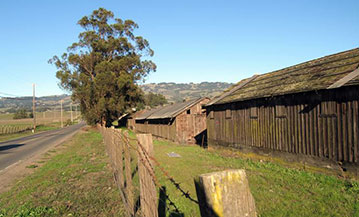
What can I do if a historic resource is threatened?1 Your first step should be to contact the local planning department with jurisdiction over the historic resource and inquire about its status. Ask if a demolition application has been submitted and if it has been identified on any surveys. If it has not been surveyed, a historic resource evaluation is necessary. 2 Ask the planning staff what next steps are being taken under the local ordinance and the California Environmental Quality Act (“CEQA” – additional information about CEQA follows). CEQA requires that local governments which review and approve individual demolition permits have an obligation to determine if a resource is eligible for listing on the National or California Register, and that any Environmental Impact Reports consider alternatives to the proposed demolition and the feasibility of these alternatives. This is by no means a guarantee that a building will be saved, but it does mean that a project can be changed by studying alternatives to demolition. The Agency must make the EIR available for a period of public comment, which provides an opportunity for you and others to weigh in on the potential effects to the historic structure. 3 Contact local interest groups, community organizations (churches, temples, cultural centers, JACL group, etc), historical societies, architectural heritage associations to raise awareness and encourage advocacy and protection and ask them to sign up as “interested parties” on the Agency’s notification list when the EIR is made public. Staff at the California Preservation Foundation and The National Trust for Historic Preservation/Western Regional Office can be extremely helpful in providing guidance and connections with local organizations that can partner with you. 4 Alert local media about the threatened building and its significance to local and state history. For more information on tools and strategies for historic preservation advocacy, see the Vernacular Architecture Forum website. What is Section 106?Federal and federally sponsored programs and projects are reviewed pursuant to Sections 106 and 110 of the National Historic Preservation Act. Section 106 of the National Historic Preservation Act (NHPA) requires federal agencies to consider the effects of proposed federal undertakings on historic properties. Section 106 applies to local projects that are undertaken with federal funding. The NHPA requires federal agencies (and their designees, permitees, licensees, or grantees) to initiate consultation with the State Historic Preservation Officer (SHPO) as part of the Section 106 review process. What is CEQA and how does it offer historic protection?The California Environmental Quality Act (CEQA) requires state and local public agencies to identify the environmental impacts of proposed discretionary projects and determine if the impacts will be significant. If the project effects are deemed to be significant, the agency must identify alternatives and mitigation measures that will substantially reduce or eliminate significant impacts to the environment. Historical resources are considered part of the environment and a project that may cause a substantial adverse effect on the significance of a historical resource is a project that may have a significant effect on the environment. ABOUT THE PRESERVATION TOOLKIT HOW DO I RESEARCH A BUILDING OR JAPANTOWN NEIGHBORHOOD? HOW DO I CONDUCT AN ORAL HISTORY INTERVIEW? WHAT IS HISTORIC PRESERVATION? WHAT IF A HISTORIC RESOURCE IS THREATENED?
Other valuable resourcesTHE NATIONAL PARK SERVICE THE NATIONAL TRUST FOR HISTORIC PRESERVATION The website also has case studies that include examples of successful preservation efforts in many arenas. Two that have particular meaning for resources in historic California Japantowns case studies on historic churches, and barns and other agricultural structures. BIBLIOGRAPHY ON CALIFORNIA JAPANTOWNSPreserving California’s Japantowns staff has developed a draft California Japantowns Bibliography to aid our research and to support work by others that document Japanese American heritage. ››READ MORE. PHOTOS TOP L-R: Grapefruit tree at the former site of the Toyo Hotel in Marysville. Cornerstone of Wintersburg Presbyterian Church in Huntington Beach; View down Walnut Grove street. BOTTOM-RIGHT: The Matsumoto ranch, one of the last historic chicken ranches in Sonoma County. |
||
